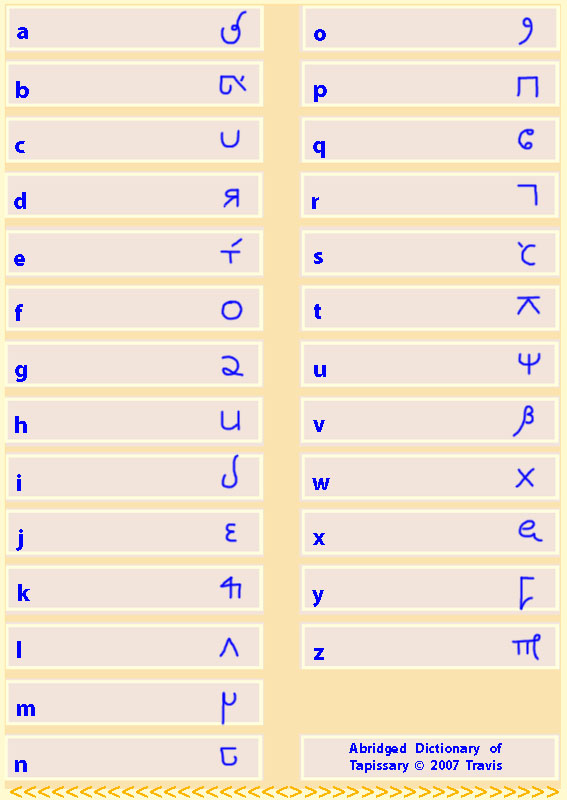
In this online dictionary of Tapissary, there will be a couple thousand çelloglyphs listed. A çelloglyph is a hieroglyphic character invented for the Tapissed language. If a word doesn't have a çelloglyph, then you may spell it. Tapissary has a syllabary, which is a system where each letter represents a phonetic syllable. It is a complex writing tool with hundreds of letters, so it is not presented here in this abridged dictionary. The third spelling option is the alphabet, which you see on this page. In Tapissary, the alphabet is used to spell foreign words, but because of its simplicity as an immediately usable tool for my visitors, I'm using it in most of the texts on this website for any word that either has no çelloglyph, or for words that you will not yet have been introduced to their çelloglyph. The Hansel and Grethel story on this site is a good example.
.
History of the Alphabet
Though Tapissary was originally devised as a hieroglyphic language with influences from American Sign Language of the Deaf and several hieroglyphic languages of the world, it only took a couple years before a phonetic alphabet accompanied it. I based the letters on preexisting çelloglyphs. As many years passed, the phonetic alphabet gave way to a phonetic syllabary around 1994. There was still need for an alphabet where foreign words for which I didn't know their phonetic pronunciation could be spelled, and this is why the system above was created. The shapes of the letters present a kind of tour of my linguistic history. The letters B, D, E, L, M, N, P, R, S, T, U, V, W, and Z come from my childhood when I was first being introduced to foreign alphabets. Some of the letters are copied, while others are my own invention. The letters A, I, K, O, Q, X and Y, are taken from a linguist friend of mine, John W., who had invented his own alphabet, and I placed these letters of his, with some alteration, into Tapissary's foreign alphabet. The letters C, F, G, H, are remnants from Tapissary's original phonetic alphabet. The alphabet above is a newcomer to my langauge, and has been in use since 1998.
